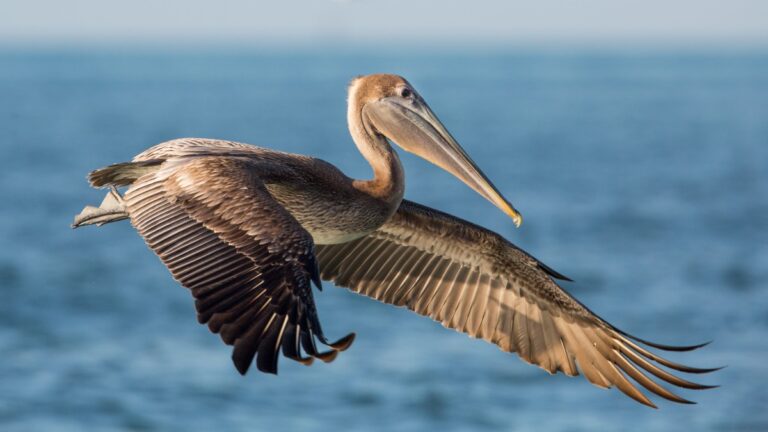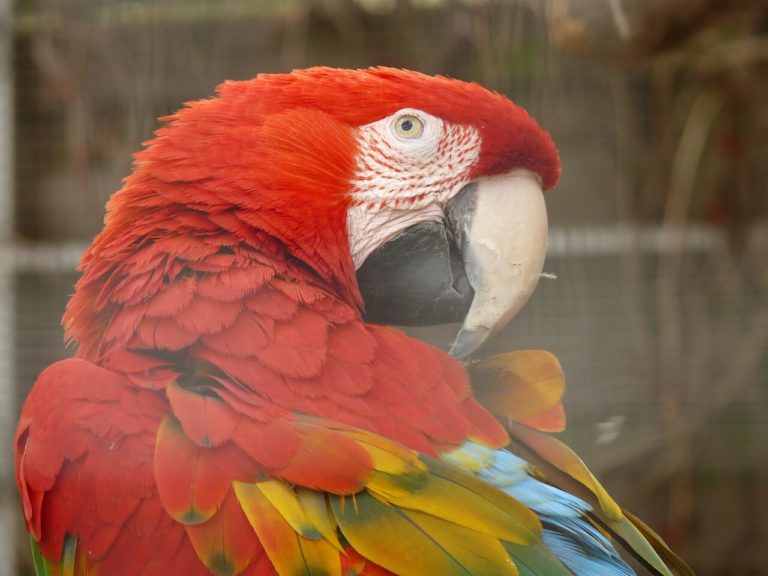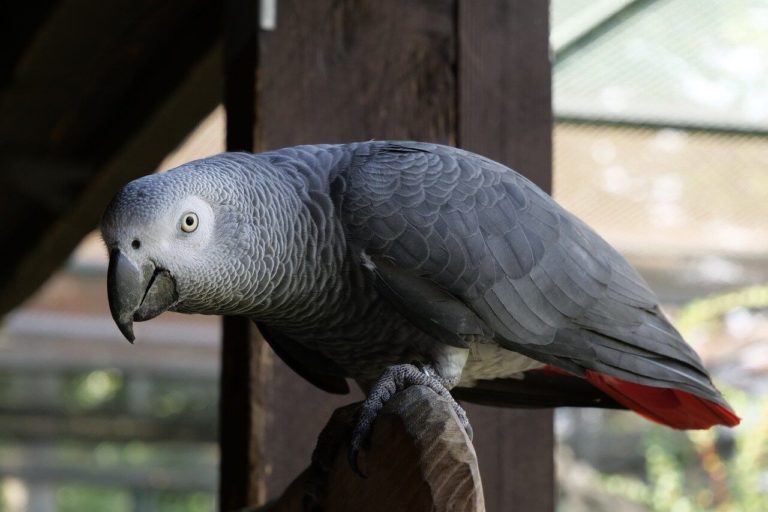






Cage
Lovebirds do not make special demands on the cage. The main thing is that it is not too small. As with other bird species, the larger the cage, the more comfortable they feel. There is a lower guideline value, which is to be kept absolutely. These are the minimum dimensions.
- 0.60 meters depth
- 1,00 meter width
- 1,20 meter height
These values are really the lowest values. If space permits, a larger cage should be provided after all. Bird cages made of wood are not the best choice for lovebirds. They like to gnaw and therefore the cage could be unusable after a short time. Branches should be mandatory part of the interior of the cage. Because this way the lovebirds have enough materials to gnaw on.
Bathing possibilities should be compellingly provided. The lovebirds love bathing. Therefore, they should be given the opportunity to bathe whenever they want.
Free aviaries are a good alternative to a bird room. Preferably, the animals should be accustomed to the climate in the spring. Wintering in the aviary is also possible, provided that a heated shelter is available. Otherwise, there is a risk of frostbitten feet and toes.

Nutrition
In order for the lovebird to feel completely at ease, a good and varied diet is a prerequisite. Feed-wise, the composition of the diet is similar to that of budgies and cockatiels. A good mix of grains is the main food.
| Main feed | Other ingredients |
| Sunflower seeds | Fresh bark of fruit trees |
| Millet and glossy seeds | Fresh buds |
| Oats | Vegetables |
| Hemp | Various minerals |
Variety is advised. For example, you can supplement the main feed with little apples and cucumber. Raspberries, cherries, herbs and melon, for example, are also suitable. However, there are also foods that are rather unsuitable for lovebirds:
- Avocado
- Beans
- Plums
- Cauliflower
- Grapefruit
- Red cabbage
- Rutabagas
- White cabbage
- Rhubarb
- Lemon
- Brussels sprouts
- Savoy cabbage
Limestone belongs in every cage or aviary. During the breeding season there are a few things to keep in mind. Mealybug larvae are especially good during this time. Ant pupae are also very tasty for the lovebirds during the breeding season.
Keeping
The keeping of lovebirds is one of the uncomplicated varieties. They are very quickly satisfied. If you want to keep the lovebirds in the apartment, you have to expect an increased noise level. Sometimes not even a quiet evening in front of the TV is possible.
Agapornis are particularly sociable little animals. Keeping them alone is absolutely taboo. They need a conspecific to make them feel comfortable. If two have found each other, they will stay together until the end of their lives. If you observe the animals, you will notice that they love to cuddle with each other and show a distinct grooming behavior. But the behavior can also change from one second to the other. An initially dear and cuddly love bird can quickly become a quarrelsome conspecific. For this reason, it is very important to always observe the animals. The powerful beak can cause considerable damage to other birds.
Lovebirds should not be kept together with budgies. The bird species are quite different. It can come to scuffles, which can end badly for the budgie.
Lovebirds are quite curious fellows. They nibble at everything possible and impossible. Electric cables and other dangerous objects should be out of reach for the animals. It makes sense to have enough branches for the lovebirds to play on.
Sometimes it is not easy to tame lovebirds. It is important to always bring a lot of patience and calmness. In this way, the owner can still succeed in winning the love bird over. However, repeating words will not work. You can try as hard as you want.
Even if the lovebirds are kept at least in pairs, you as the keeper must take care of them and give regular attention. Also, always provide fresh water and give food. So you can’t leave the animals to their own devices. This is certainly not the purpose of any bird lover.

The Different Types Of Lovebirds
The lovebirds come in different species. A total of nine different species are currently known. Some of them are excellent for aviaries and cages. Other species, on the other hand, are rarely or never found in domestic cages. Species that can be found in domestic cages and aviaries include:
Peachhead
Blackheaded
Sooty head
Among the lesser known, or the species that are rarely used for breeding, are the following species of lovebirds:
Orangehead
Greyhead
Greenhead
Rosebud
Strawberry Lovebird
Taranta Parrot
The differences between the species lie in the origin of the birds and in the colors. The six species, which are not often found in domestic cages, are particularly shy. Moreover, breeding of these species is particularly difficult.














Wie kann man erkennen ob es ein Weibchen oder ein Männchen ist?
Hallo Monika,
das ist gar nicht so leicht! Männchen und Weibchen sind gleich gefärbt und äußerlich nicht voneinander zu unterscheiden. Oft zur Geschlechtsbestimmung herangezogene Merkmale wie Beinstellung, Schwanz- oder Kopfform oder der Beckentest (hierbei werden die Beckenknochen abgetastet) sind mehr als unsichere Kriterien, die öfter in die Irre führen.
Geschlechtsabhängige Verhaltensmerkmale wie das Füttern oder Begatten eines Partnervogels oder das Sammeln von Nistmaterial geben Hinweise, leider jedoch auch keine 100%ige Sicherheit. Um solches Verhalten richtig deuten zu können braucht man daher neben Erfahrung auch Vergleichsmöglichkeiten.
Die einzig sichere Methode zur Geschlechtsbestimmung ist die Untersuchung der Erbsubstanz (DNA-Analyse). Eine solche Untersuchung, für die man entweder Federmaterial oder einen Blutstropfen benötigt, bieten mittlerweile viele Tierärzte, bzw. Fachlabore an.
Leider ist die Geschlechterbestimmung als Laie mehr als schwierig.
Ich hoffe, ich konnte deine Frage beantworten.
Viele Grüße,
Marieke vom Haustierratgeber-Team
Nur zur Info: das zweite Bild zeigt keine Unzertrennlichen, sondern Sonnensittiche. Eine von Aussehen, Grösse und Verhalten vollkommen andere Art.
Oh, danke für Deinen Kommentar und die Aufklärung!
Hallo,
Ich bin seid heute glückliche Besitzerin von 2 Junge Liebesvögel. Da mir von den Vorbesitzern gesagt würde da sie sehr laut sein sollen ist meine Frage. Bekommen die Liebesvögel auch ruhiger? Wenn ja wie.
Ich habe zwei junge Agaporniden schon seit 5 Monaten und sie haben immer noch Angst vor mir und meiner Hand. Wie kann ich sie zähmen oder ablehnen das ich nicht der Feind bin und das meine Hand nichts Böses ist?
Hallo Iliana,
Es gibt kein Wundermittel, was Deine Agaporniden zahm macht, teilweise werden sie auch nicht zahm, aber eine gute Haltung und genug Freiflug könnte definitiv helfen.
Liebe Grüße
Dein Haustierratgeber-Team
Eine Frage hab ich,wir haben seit 5 Jahren Rosenköpfchen die auch schon zwei mal erfolgreich gebrütet haben und drei junge groß geworden sind,letztes Jahr im Sommer haben wir ein großen Käfig für draußen geholt,da sind die dann den Sommer über drin dafür auch ein Brutkasten geholt,doch letztes Jahr hat es dann nicht mit dem brüten geklappt 15 Eier und nichts geschlüpft die beiden zanken sich wer drin sitzt und dabei wird auch der andere verletzt jetzt haben wir die Vögel wieder draußen im Käfig mit Häuschen zum brüten und die zanken wieder rum und verletzten sich gegenseitig,woran liegt das?sonst kuscheln die zwei und sind sehr lieb zueinander.
Hallo in die Runde,bin seit 2 Monaten Pfirsischköpfchen-Mama,die beiden sind innerhalb 4 Monaten drei mal umgezogen,einer der beiden sah etwas verrupft aus als ich sie holte,die Vorbesitzer sagten mir das sie beim Tierarzt waren und es wäre wohl die Mauser. Nun ist es der Fall das er nur noch Federn am Kopf hat und der Körper nur noch voll mit grauem Flaum ist,er kann nicht fliegen und hangelt sich am Gestänge des Käfig rum. Ist das die normale Mauser oder ist er vielleicht ein Stressvogel wegen den Umzügen? Liebe Grüsse
Hallo Natalie,
wir sind keine Tierärzte und können Dir daher keinen Rat geben. Allerdings solltest Du zeitnah einen Tierarzt anrufen und dort vorstellig werden.
Hallo,
ich habe ein junges Pfirsichköpfchen.
Die Zeit ist nun bald ran ihn abzusetzen, allerdings weiß ich nicht ob ich Ihn alleine setzen kann oder ein zweiter dazu muss.
Könnt ihr mir da vielleicht weiterhelfen?
Gruß André
Hallo,
ich habe ein Jungtier und es wir nun bald Zeit zum absetzen. Kann ich Ihn alleine, in einen Käfig setzen? Oder muss zwingend ein zweiter dazu? Den separaten Käfig mit dem Jungtier könnte ich direkt neben die Voliere stellen, dass sie sich sehen können.
Vielen Danke schon mal für Eure Hilfe .
Gruß André
Hallo ich hätte mal eine Frage habe Ein Pärchen und die haben 6 Eier und die Mutter hat ein 1 ins wasser gelegt ist das normal
Hallo Nathalie,
Nein, das ist nicht normal, da das Wasser das Ei auskühlen wird. Das Ei brauch eine höhere Temperatur um überleben zu können.
Liebe Grüße
Dein Haustierratgeber-Team
Vor etwas längerem legte ich mir ein Pfirsichköpfchen Pärchen zu. Beide haben sich immer sehr gut verstanden und kuschelten sehr gerne miteinander. Später bot mir ein Bekannter
ein zurückgebliebenes Weibchen an und ich willigte daraufhin ein, das Weibchen aufzunehmen. Allerdings konnte ich beobachten das das Männchen sich eher vom dazugekommen Weibchen fern hält bzw. sogar wegrennt/ wegfliegt und die beiden Weibchen nur noch miteinander spielen. Das “erste” Weibchen ignoriert auf einer gewissen Art das Männchen, was mir Sorgen bereitet. Das Männchen ist seit der Ankunft des neuen Weibchens sehr leise und fliegt beim Freiflug kaum noch, obwohl es das Fliegen und das Zwitschern sehr liebt (wie wahrscheinlich jeder Vogel). Das neue Weibchen ist nicht aggressiv, sondern eher scheu, weshalb ich mich frage was das Problem sein könnte und warum sich die Pfirsichköpfchen so verhalten. War es ein Fehler das neue Weibchen aufzunehmen?
Wie lange brūtet ei n unzertrennlicher vogel auf seinen Eiern?
Hallo Elke,
Das Weibchen brütet die Eier ca. 21-26 Tage. Nach 10 Tagen kannst Du schauen, ob die Eier befruchtet sind.
Liebe Grüße